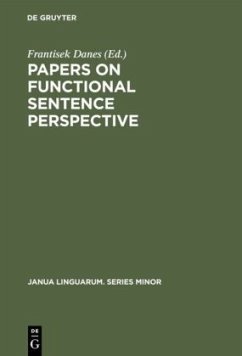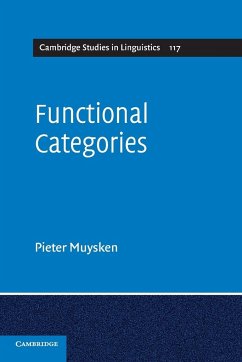
Functional Sentence Perspective in Written and Spoken Communication

PAYBACK Punkte
62 °P sammeln!
Inspired by the ideas of the Prague School, the theory of functional sentence perspective (FSP) is concerned with the distribution of information as determined by all meaningful elements, from intonation (for speech) to context. A central feature of FSP is communicative dynamism. Jan Firbas discusses the distribution of the degrees of communicative dynamism over sentence elements, which determines the orientation or perspective of the sentence. He examines also the relation of theme and rheme to, and implementation by, syntactic components. Special attention is paid to the relation between FSP...
Inspired by the ideas of the Prague School, the theory of functional sentence perspective (FSP) is concerned with the distribution of information as determined by all meaningful elements, from intonation (for speech) to context. A central feature of FSP is communicative dynamism. Jan Firbas discusses the distribution of the degrees of communicative dynamism over sentence elements, which determines the orientation or perspective of the sentence. He examines also the relation of theme and rheme to, and implementation by, syntactic components. Special attention is paid to the relation between FSP and word order. The second part of the book deals with spoken communication and considers the place of intonation in the interplay of FSP factors, establishing the concept of prosodic prominence. It tackles the relationship between the distribution of degrees of communicative dynamism as determined by the interplay of the non-prosodic FSP factors and the distribution of degrees of prosodic prominence as brought about by intonation.
Table of contents:
Part I. Functional Sentence Perspective (FSP) in Written Communication; 1. Introduction; 2. The sentence and the carriers of communicative dynamism (CD); 3. The contextual factor; 4. The semantic factor; 5.The theme and the non-theme; 6. Some special issues of the theory of FSP word order and FSP; Part II. Functional Sentence Perspective in Spoken Communication; 7. Non-prosodic distribution of degrees of CD and degrees of prosodic prominence; 8. Some more observations on the relationship between the non-prosodic distribution, and of prosodic prominence; 9. Analyses of two spoken texts; 10. Some special issues concerning FSP in the spoken language; Epilogue.
Jan Firbas discusses the key phenomenon of communicative dynamism, which the sentence elements carry in different degrees, and the distribution of which determines the orientation or perspective of the sentence.
Table of contents:
Part I. Functional Sentence Perspective (FSP) in Written Communication; 1. Introduction; 2. The sentence and the carriers of communicative dynamism (CD); 3. The contextual factor; 4. The semantic factor; 5.The theme and the non-theme; 6. Some special issues of the theory of FSP word order and FSP; Part II. Functional Sentence Perspective in Spoken Communication; 7. Non-prosodic distribution of degrees of CD and degrees of prosodic prominence; 8. Some more observations on the relationship between the non-prosodic distribution, and of prosodic prominence; 9. Analyses of two spoken texts; 10. Some special issues concerning FSP in the spoken language; Epilogue.
Jan Firbas discusses the key phenomenon of communicative dynamism, which the sentence elements carry in different degrees, and the distribution of which determines the orientation or perspective of the sentence.














